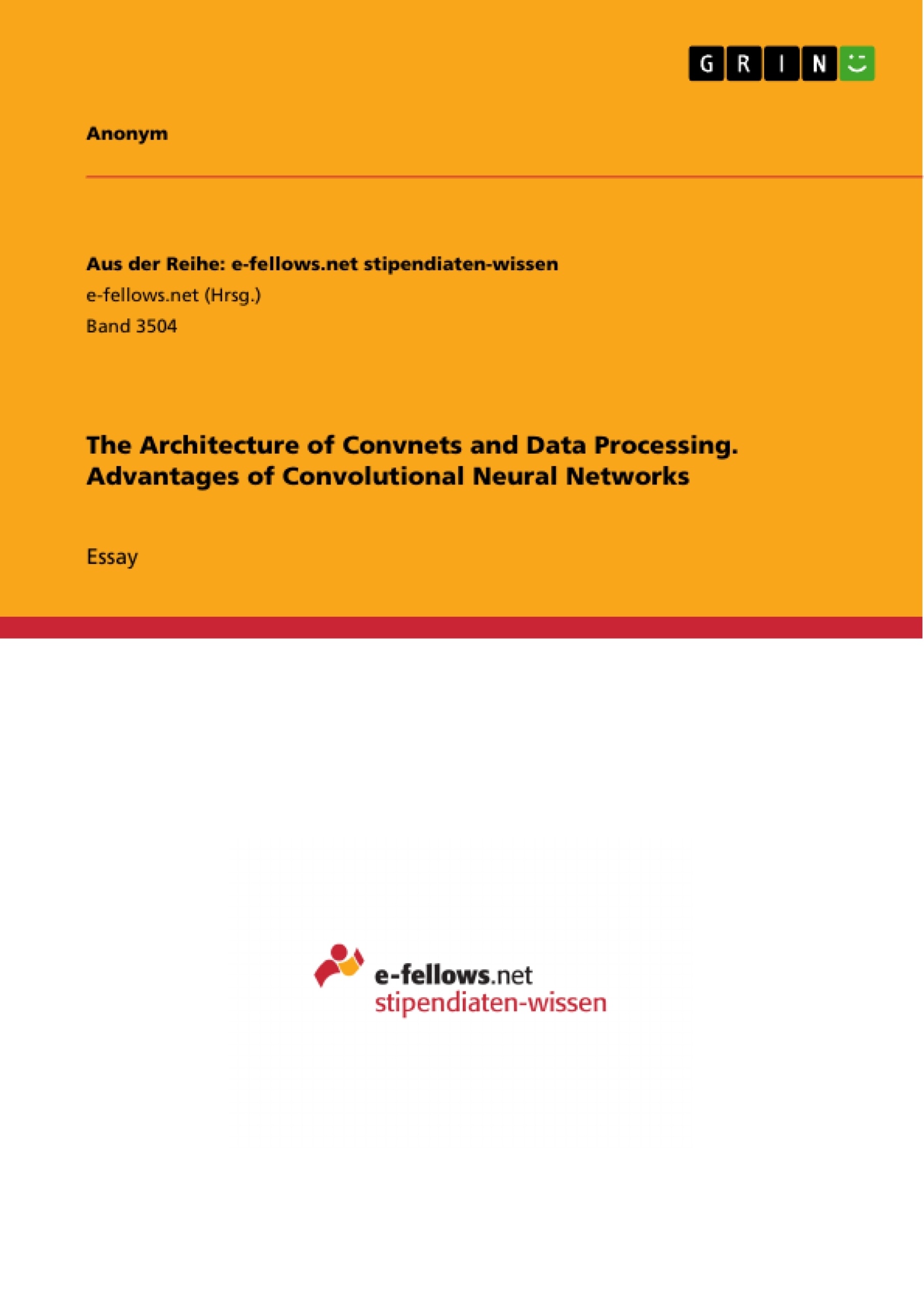In the past two decades in particular, artificial neural networks have led to new approaches and processes in machine learning in many areas. They have replaced many existing processes. In some areas, they even exceed human performance. Impressive progress has been made in the area of image recognition and classification. Above all, this includes the introduction of convolutional neural networks (ConvNets). They belong to the class of neural networks. The first ConvNet was developed by LeCun et al. in 1989. ConvNets were especially developed to enhance image processing. Therefore, they provide a unique architecture. Due to their structure and functionality, ConvNets are particularly well suited within this field of application compared to other methods.
Table of Contents
- INTRODUCTION
- Motivation
- THE ARCHITECTURE OF CONVNETS AND DATA PROCESSING
- The Convolutional Layer
- Hyperparameters and filter weights
- Activation functions und Biases
- The Pooling Layer
- The Fully-Connected Layer_
- Processing of colored images_
- The Convolutional Layer
- ADVANTAGES OF CONVOLUTIONAL NEURAL NETWORKS
- Parameter Reduction
- Weight Sharing in Convolutional Layers
- Dimensionality Reduction via Pooling_
- Object Detection
- Parameter Reduction
- APPLICATION TO THE MNIST DATASET
- SUMMARY
Objectives and Key Themes
This essay explores the concept of convolutional neural networks (ConvNets), a type of neural network specifically designed for image processing. It aims to explain the architecture of ConvNets, their advantages over traditional neural networks, and their application in image recognition tasks.
- Architecture of convolutional neural networks
- Advantages of ConvNets for image processing
- Parameter reduction and weight sharing in convolutional layers
- Object detection using ConvNets
- Application of ConvNets to the MNIST dataset
Chapter Summaries
- Introduction: This chapter provides an overview of artificial neural networks and their role in machine learning. It introduces ConvNets as a specific type of neural network optimized for image processing and highlights their key features and benefits compared to traditional neural networks.
- The Architecture of ConvNets and Data Processing: This chapter delves into the structure and functionality of ConvNets. It explains the individual components of a ConvNet, including convolutional layers, pooling layers, and fully connected layers, and describes how data is processed through these layers.
- Advantages of Convolutional Neural Networks: This chapter focuses on the benefits of using ConvNets for image processing. It discusses the concepts of parameter reduction, weight sharing, and dimensionality reduction, explaining how these features contribute to the efficiency and effectiveness of ConvNets compared to traditional neural networks. It also explores the application of ConvNets in object detection.
Keywords
The key concepts and focus topics of this essay are: convolutional neural networks, image processing, object detection, parameter reduction, weight sharing, dimensionality reduction, and the MNIST dataset.
- Quote paper
- Anonym (Author), 2020, The Architecture of Convnets and Data Processing. Advantages of Convolutional Neural Networks, Munich, GRIN Verlag, https://www.grin.com/document/914160



